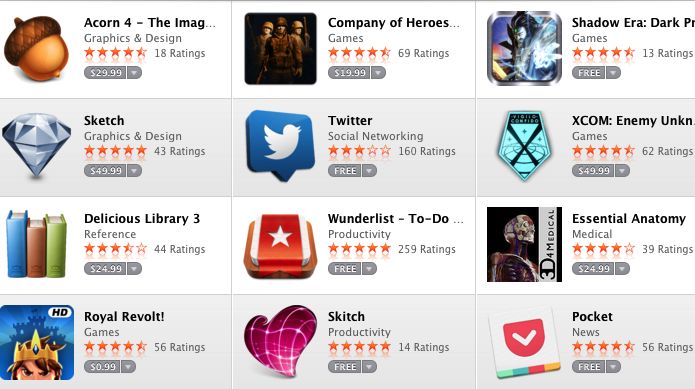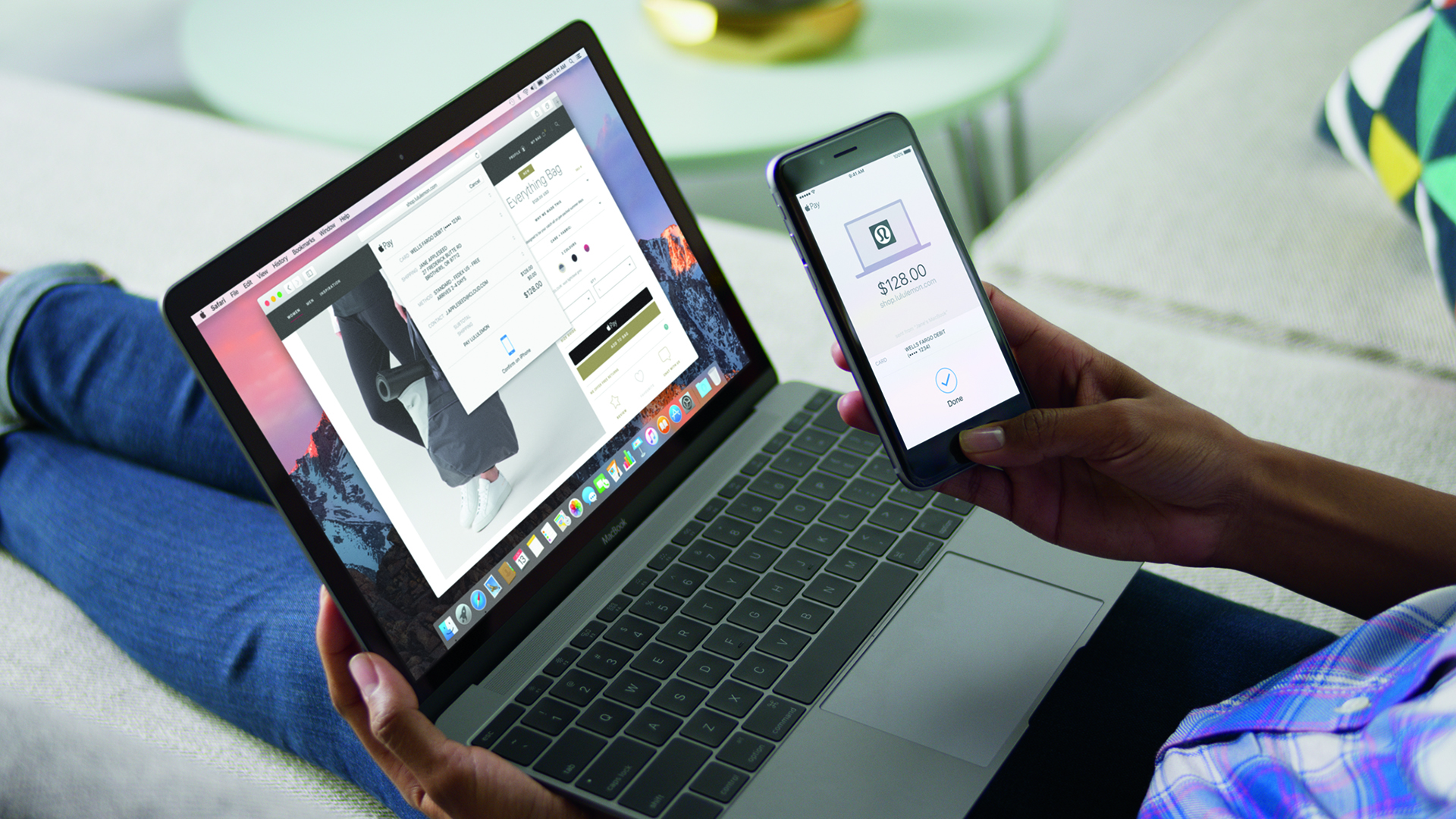Your Mac simply wouldn't be the same without the iPhone – here's why
The iPhone's influence on the Mac is palpable

When the iPhone first launched nearly a decade ago, it and Apple's well-revived Mac computers were clearly delineated as different devices. One had just started its journey to ubiquity, whereas the other had already been on that road for decades.
But, perhaps even under your nose, Apple's phone has all but morphed the form and function of its computers over that same nine years. You might be surprised to see just how much of what's in your iPhone has been brought to the Mac.

Today, it'd be impossible to imagine what the Mac would look like without the iPhone, so here's how the Mac and iPhone became best buds over the past nine years.
This story starts with a Store
Not long after release, the iPhone's popularity absolutely exploded, it became the next major device of Apple's ecosystem for millions since the iPod. Once the App Store launched on iPhone in 2008, that snowball turned into an avalanche.
Naturally, Apple realized the insane revenue potential in its creation. Regardless, it took three years for the firm to bring its software-selling strategy to the Mac in early 2011, in the middle of Mac OS X 10.6 Snow Leopard's life span.

While the Mac App Store hasn't necessarily panned out in the same, meteoric way the iPhone version has, it clearly inspired Apple to see what else about the iPhone could improve OS X.
The literal and figurative Launchpad
In the summer of 2011, Apple launched OS X 10.7 Lion, and with it the first spate of iPhone-inspired features that would truly transform how the operating system looks and works in relation to the iPhone. The most notable of which was the Launchpad, a new means of accessing all your installed apps.
Sign up for breaking news, reviews, opinion, top tech deals, and more.
Either pressing the function key on MacBooks released post-Lion or pinching four fingers together on the touchpad summons a very familiar arrangement of apps for anyone that's used an iPad in landscape mode. From there, simply clicking on any app will launch it, and you can even rearrange your apps here and create folders – just like you can on iOS.

While this editor in particular hasn't used the feature much, being a purist, it's easy to see folks coming into the Apple world via the iPhone using the feature heavily. That probably explains why it hasn't gone anywhere in five years.
FaceTime forever fuses the iPhone and Mac
For years prior to OS X Lion, Mac users communicated with one another both via text and video over a tool known as iChat. Naturally, seeing the vast adoption of FaceTime video chat on the iPhone and iPad, Apple brought the feature to the Mac, so that all three devices could video chat natively together.
However, FaceTime didn't outright replace iChat just yet – it wasn't until OS X 10.8 Mountain Lion in the summer of 2012 that the tool was swapped out for an app simply called Messages. Now, users could chat via instant message, video and even with their iPhone-toting friends via iMessage in a single app.

This release of OS X also saw a slew of iOS-inspired changes and updates. A Mac version of the iPhone's Notification Center appeared with this upgrade, as did versions of Reminders, Notes and Game Center – all of which started on iPhone and now synced with those versions via your Apple ID.
At this point, Apple's Mac interface strategy was clear: give the Mac the same basic functions and tools as the iPhone, but in such a way that's useful to Mac users and connects them back to their smartphones wherever possible. But, that ethos would too evolve in due time.
Mavericks begins to morph the UI
For a long time, the Mac interface was both adored and abhorred for its skeuomorphic approach to design, i.e. icons and design elements that look like their real-world counterparts. For instance, the Calendar app looked like an actual calendar on your Mac screen, complete with stitching and leather textures.

This editor in particular had always been quite fond of it, but it was with 2013's OS X Mavericks that Apple decided it was time to bring the Mac interface's design identity closer to that of its iOS products. The Calendar app lost its stitching and the Notes app lost its paper-like texture – and that's just for starters.
Apple's very own, iPhone-born Maps app made it over to the Mac with this release as well as iBooks, with all of the syncing and iOS-style trappings (with widened Mac functionality) that users had come to expect by that point.
And today, the two are inseparable
Releases following Mavericks, namely OS X 10.10 Yosemite of 2014, saw these design identity tweaks turn into a full-blown overhaul coinciding with a similar shift on iOS. The charming if divisive skeuomorphs were no more, and Apple bolstered that visual continuity with functional continuity in an eponymous suite of tools.
Continuity made the union of iPhone and Mac even stronger, allowing users to answer calls coming in from their iPhone on their Mac device, more readily use the iPhone as a Wi-Fi hotspot as well as take content from Apple's iWork apps on iOS and finish working on it in their OS X counterparts.

This release also marked the merging of yet another iPhone app with an OS X version in iOS's Photos app replacing the Mac's storied iPhoto app, and marrying the two together with a shared library of photos over iCloud.
By the time OS X 10.11 El Capitan arrived just last year in 2015, if you owned both an iPhone and a Mac, you were working in both iOS and OS X simultaneously without even knowing it.
And today, with a (truncated) return in name to macOS Sierra, Apple has finally forges the last missing link between the iPhone and the Mac: Siri. But, in the spirit of all of the Mac's iPhone-inspired upgrades, Siri behaves in ways on Mac that it doesn't on iPhone.
For instance, Siri on Mac can retrieve your system's files based on natural search queries – it can't do that on iPhone. Another example is its ability to store your results in the Mac's version of the Notification Center for later retrieval or click and drag results into other documents.

For Pete's sake, you can now even copy a piece of text or a photo on your iPhone and paste it on a nearby Mac with the Universal Clipboard feature. See what we mean about working on two operating systems without even knowing it?
Since the iPhone launched back in 2007, it has influenced the development of the Mac in almost every way – to the point where it's impossible to imagine what the Mac would be like had the iPhone never been released.
How else will the iPhone continue to inspire the Mac? That's a question only Apple knows the answer to in truth, but if we could suggest something: blow that Universal Clipboard wide open.
- Check out the best laptops of 2016
This article is part of TechRadar's Mac Week. This year marks not only the 10th anniversary of Apple's MacBook, but the triumphant return of macOS. So, TechRadar looks to celebrate with a week's worth of original features delving back into the Mac's past, predicting the Mac's future and exploring the Mac as it is today.

Joe Osborne is the Senior Technology Editor at Insider Inc. His role is to leads the technology coverage team for the Business Insider Shopping team, facilitating expert reviews, comprehensive buying guides, snap deals news and more. Previously, Joe was TechRadar's US computing editor, leading reviews of everything from gaming PCs to internal components and accessories. In his spare time, Joe is a renowned Dungeons and Dragons dungeon master – and arguably the nicest man in tech.